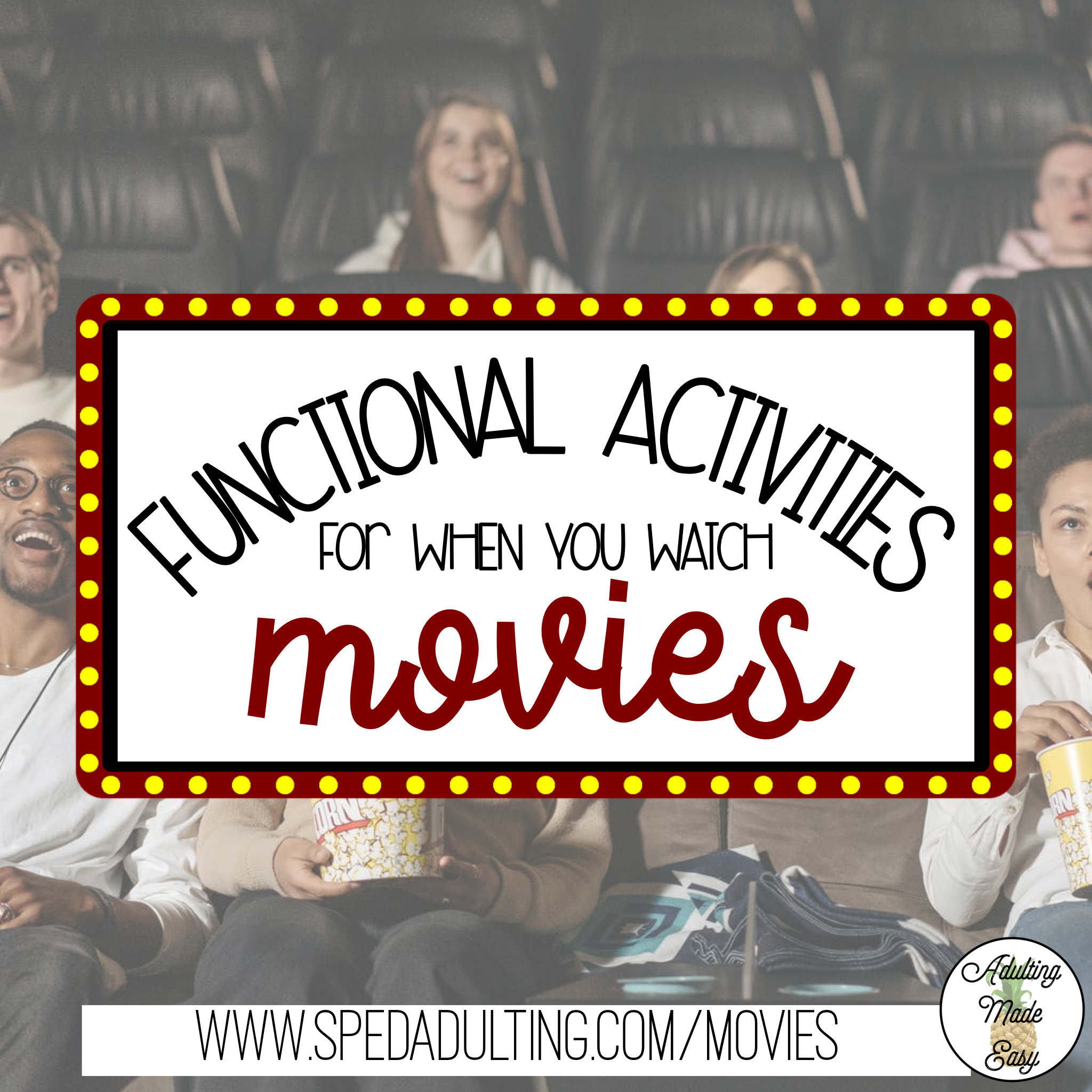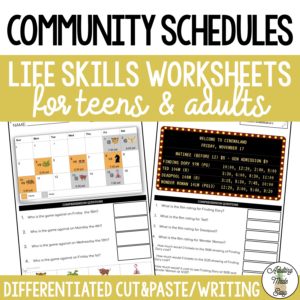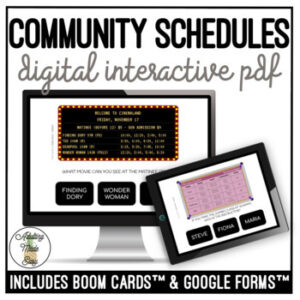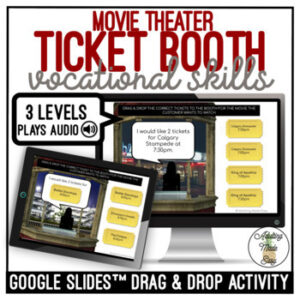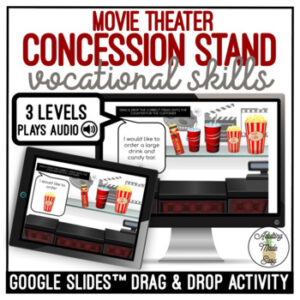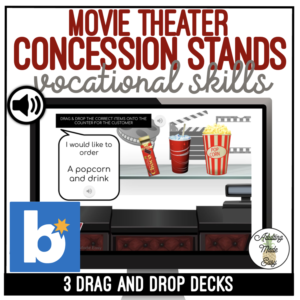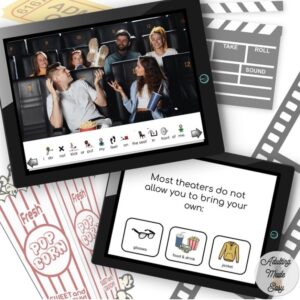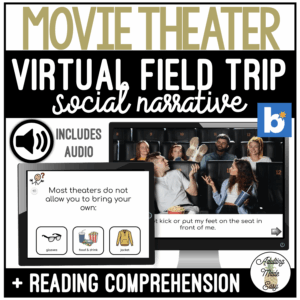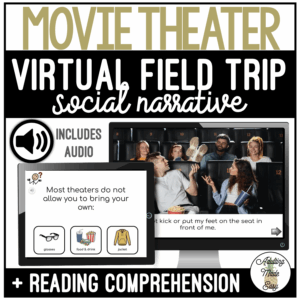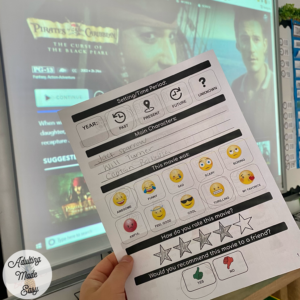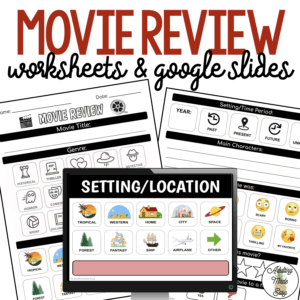Teacher truth: Sometimes we watch movies on #FunFridays (whether it is in class or in the community) and I know most people’s thought when they think about movies being played in class – the teachr is lazy and it’s not educational. I beg to differ though. There are some important skills that can be taught for those few times you do decide to show a movie in class (or if you go on a CBI to the movie theater). Here are a few things I do to make it functional & educational.
REWARD
Watching a movie is a highly preferred activity for most students. As an incentive for positive behavior, I allow students who have had a great week and followed classroom rules to suggest a movie for the class to vote on. The options can be movies currently in theaters or those available on Disney+ if we’re watching in the classroom.
If a student’s movie suggestion is not selected in the class vote, it becomes an opportunity to practice coping with disappointment and good sportsmanship—important social-emotional skills. It can also motivate students to continue demonstrating positive behavior so they can keep participating in future votes.
Alternatively, if voting isn’t the best fit for your group, you could use a point system, allowing the student with the highest points to select the movie.
Pre-Trip Skills
- Planning and decision-making: Choosing a movie based on time, interest, and appropriateness
- Understanding schedules: Reading showtimes, planning departure and return times
- Social communication: Practicing how to ask questions, request assistance
- Budgeting: Calculating ticket and snack costs within a spending limit
- Voting: As I mentioned, students have the chance to express their opinions and vote for the movie they’d like to watch. This process is a great opportunity to practice skills like expressing preferences, advocating for their choices, and sharing opinions with others.
- I typically use the Kami extension app to keep track of the votes digitally by drawing tallies on the movie choice board, but you can just as easily do this on a whiteboard if you prefer a non-digital approach. After tallying the votes together, we count them up and see which movie received the most—sneaking in a bit of math practice at the same time.
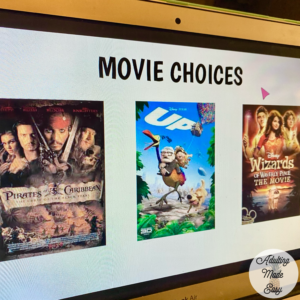
The slide you see above – I created in a few minutes but quickly Google Image searching the students’ movie choices and pasting them onto a Google Slide.
Heres a fun community schedule functional reading activity you can practice beforehand!
TICKETS
- Handling money: Paying for tickets or concessions with cash or a debit card
- Waiting for and checking change
- Using coupons or discounts (e.g., student rates or summer specials)
To participate in the movie activity—whether it takes place in the classroom or out in the community—students get to practice important life skills such as purchasing the correct ticket, counting money, using the next dollar up strategy, and waiting for change. This can also be a great opportunity for students to work in groups: one group can take on the role of ticket booth employees to practice vocational skills, while the other group purchases tickets.
I usually create a quick ticket using Google Slides that lists the chosen movie, and I adjust the ticket price each time so students can practice handling different amounts.

In class we use play money that looks pretty realistic (affiliate link)
Here’s a fun ticket booth digital activity students can practice functional reading and vocational skills!
SEATS
Here’s another fun addition for your tickets—print them with seat numbers and letters, and label the seats accordingly, just like assigned seating in a real movie theater. The photo shows a movie day hosted by our speech department in the MPR, but this idea can be easily adapted for your own classroom!
COOKING
If we’re watching the movie in class, students can practice using the microwave to make popcorn and work on their social skills by requesting different toppings. In the past, we’ve also used a popcorn machine, giving students the chance to practice filling it and making popcorn from scratch. For extra variety, you can offer a selection of popcorn seasoning shakers (affiliate link) and make things even more fun by serving different drinks alongside the popcorn.
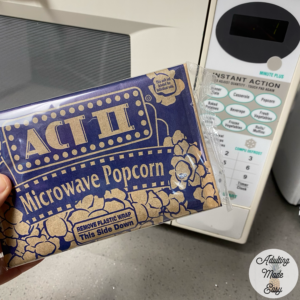
Check out this Movie Theater Concession Stand digital activity to practice vocational skills!
SOCIAL SKILLS & ETIQUETTE
- Waiting in line patiently
- Following social norms: Whispering, no phone use, not standing up in front of others for too long…etc
- Being part of a group: Staying with peers and following staff directions
- Interacting with staff: Greeting, asking for help, saying thank you
Before the movie or field trip, we review a social story about what to expect at the movie theater and appropriate behavior while we’re there, such as not putting feet on the seats, talking loudly, or using cell phones. During the movie, students have the opportunity to practice sitting quietly and being respectful of others around them.
Check out this Movie Theater Virtual Field Trip Social Narrative that comes with comprehension questions.
Clean-Up and Responsibility
- Cleaning up after oneself: Throwing away trash after the movie
REVIEW
After the movie, we take time to review and reflect on what we watched. The worksheet shown asks students to identify the genre, setting (both location and time period), main characters, share their personal thoughts about the movie, give it a rating out of five stars, and say whether or not they would recommend it to a friend.
Check out this visual Movie Review worksheet & coordinating Google Slides interactive activity.
ADDITIONAL EDUCATIONAL BENEFITS OF GOING TO THE MOVIE THEATER
Going to the movie theater also offers several educational benefits, even though it’s often seen mainly as entertainment. Here are some key benefits, especially from an educational and life skills perspective:
Literacy and Language Skills
- Storytelling: Watching movies helps students understand narrative structure—beginning, middle, end, and character development.
- Listening Skills: Following dialogue improves attention and listening comprehension.
- Vocabulary Expansion: Exposure to new words and phrases in context.
Critical Thinking
- Discussion: After the movie, students can discuss themes, plot, character motivations, and lessons learned.
- Media Literacy: Analyzing how movies communicate messages, use music, images, and sound to tell stories or persuade.
Social Skills
- Group Behavior: Practicing appropriate behavior in public settings (quiet during the film, polite interactions).
- Turn-Taking and Patience: Waiting in line, finding seats, and waiting for the movie to start.
Sensory Experience
- Exposure to Different Environments: Adjusting to low light, loud sounds, and large crowds in a safe, supervised way.
- Sensory Adaptations: Some theaters offer sensory-friendly screenings for students who need them.
Cultural Awareness
- Exposure to Different Stories: Movies often feature different cultures, perspectives, and experiences.
- Understanding Diversity: Seeing characters and stories that reflect a wide range of backgrounds and situations.
Emotional Learning
- Empathy: Identifying with characters, understanding emotions, and discussing feelings after the movie.
- Self-Regulation: Managing excitement, fear, or disappointment during and after the film.
Motivation and Engagement
- Novelty: Going to the movies is fun and motivating, making it a powerful reward or incentive for good behavior or hard work.
Thanks for reading!

